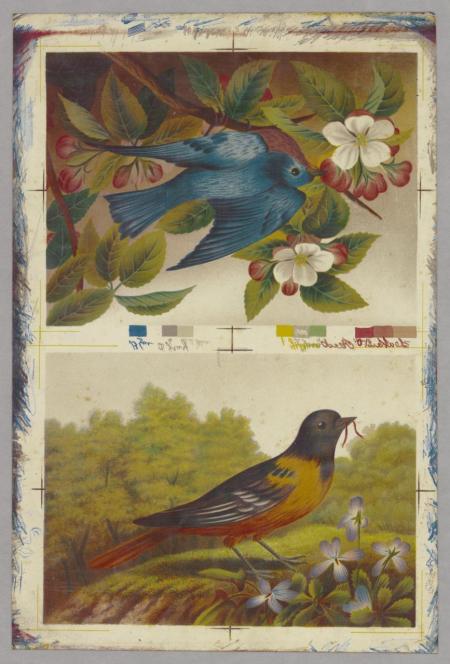
This collection of just over 1,000 objects contains a visual record of the work of the lithographic printmaker George Dubois (c.1810-1888) and his descendants.
George was born in France and, after serving as an artist in the military there, went to Germany to learn lithography. In 1849, at the age of 39, he immigrated with his wife and children to the United States and worked briefly in Philadelphia, before settling in the Boston area.
In the beginning, George worked for established printers, including Benjamin W. Thayer, S.W. Chandler & Brother, and John H. Bufford. Members of the Dubois family, including George's brothers who had joined him from Europe, and his oldest sons also gained experience with some of these companies, and additionally worked for Louis Prang, who ran the largest chromolithographic firm in the area.
In 1859, the family settled in Fall River, Massachusetts, a center of the booming textile industry. In 1866, George and his sons started their own company in Fall River, which was called H.W. Dubois & Co. The firm went through various changes as the uncles and sons joined and dissolved various partnerships, eventually becoming the Fall River Lithography Co., and finally the Dubois Lithographic Co., which closed in 1892.
The George Dubois Family Collection also includes over 200 drawings and watercolors done by various members of the Dubois family, including work by George and his son Oscar (b. 1843). Many of these are preparatory drawings for lithographic designs. A typescript family memoir accompanies the collection.
Over the course of their operation, the Dubois firms produced a large amount of job work, or ephemera. Examples are found in the collection, including a sample book filled with hundreds of these tiny, often forgotten, parts of a printer's oeuvre. The largest portion of the collection is the proof collection, which includes over 300 chromolithographed sheets. Often unfinished and uncropped, these objects contain printer and color notes in the margins and offer valuable insight into the details of the chromolithographic process as it operated in the late 19th century.
Other works by the Dubois family are available through the General Library Catalog.
Access
This collection has been inventoried. Download the box list of the entire collection as a pdf file. The collection has not been fully digitized.
The George Dubois Family Collection was preserved with funds made available through the Richard A. Heald Foundation.